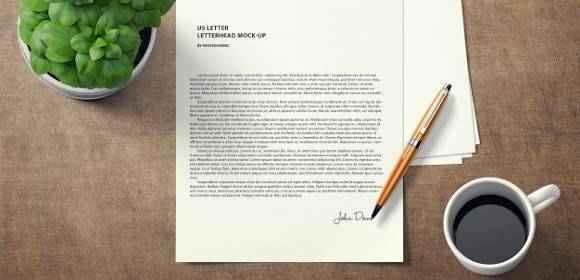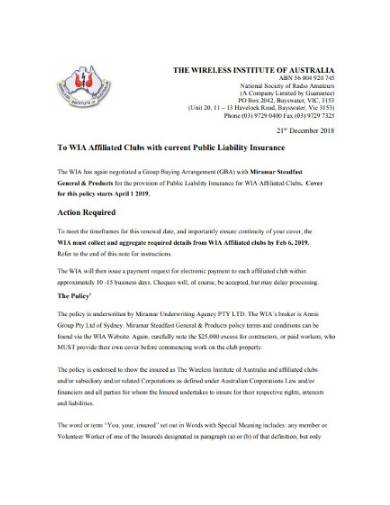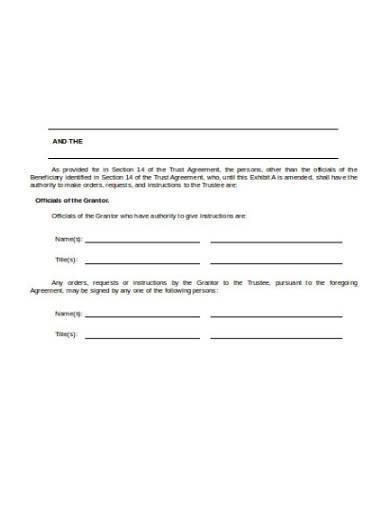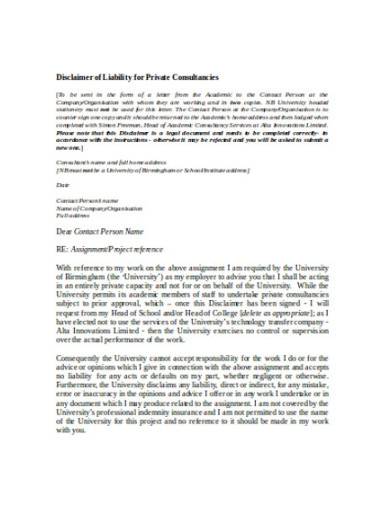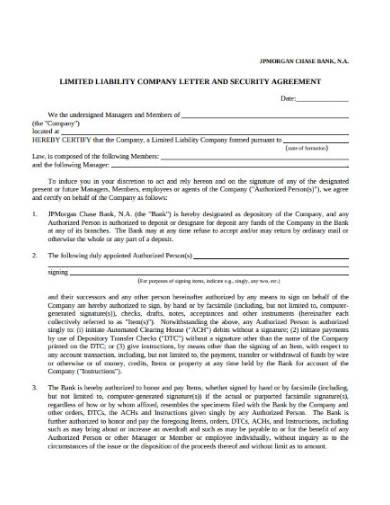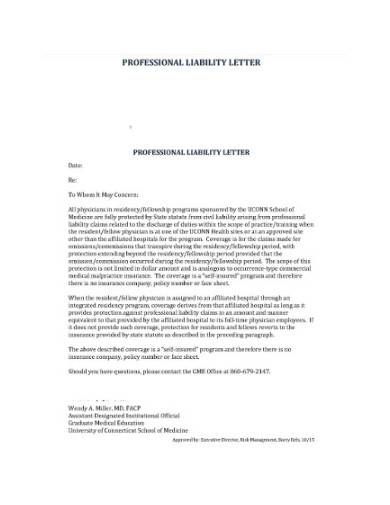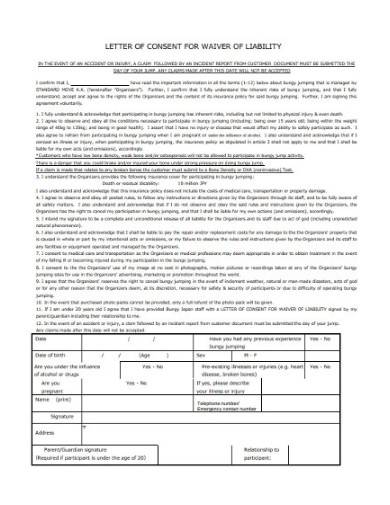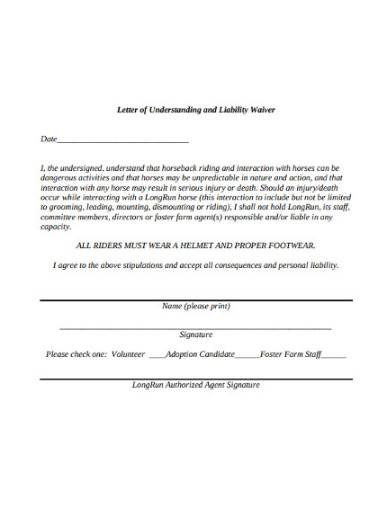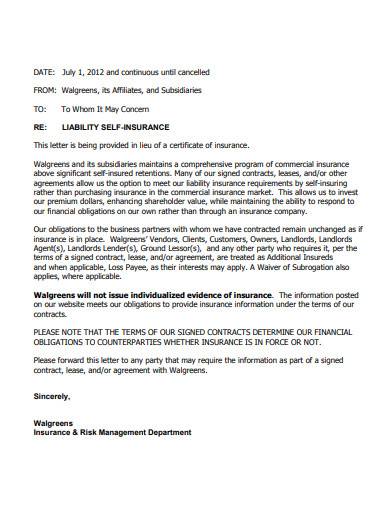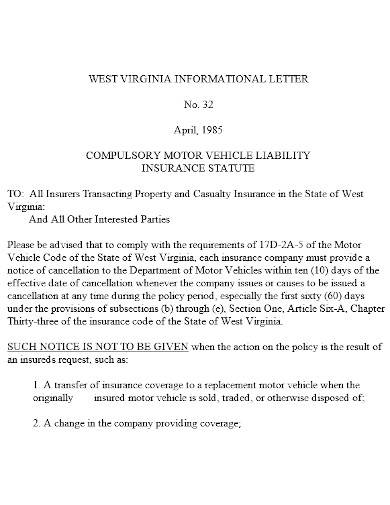Accidents could be unpredictable, and its aftermath can cause bigger problems than one could ever expect. Even if you take extra precautions to prevent these unsolicited events from happening, it still might not be enough. The hardest part is taking all the blame and taking over to the responsibilities. Yes, it is overwhelming. However, you can do something to avoid the responsibilities brought by mishaps. Making a liability letter would be your saving grace. With this letter, you can exclude the recipient or you, of being liable for any obligation, whatever may be the outcome of an event or activity. This means, if something goes wrong, you will not fear any legal proceedings because you have a written liability letter.
What Is a Liability Letter?
Have you been on a field trip when you were at middle school? If you could remember, days before your field trip, your teacher would give you a document which your parents have to sign. That is an example of a liability letter or a liability waiver. This letter/waiver contains a message telling your parents that the school will not be accountable if any accident happens while you are on the road during the field trip. Thus, a liability letter will attempt to remove legal charges from the school responsible for the field trip.
A liability letter is also applicable for businesses, especially to those with risky operations, such as factories, constructions, heavy equipment operations, etc. Once a liability letter reaches every party involved in the operation, a signature is needed in agreement to the letter. If one or more parties do not sign the letter, it means they would not take part in the operation. The primary purpose of writing a liability letter is for businesses to avoid further conflicts caused by any accident. With a liability letter, a business can put out terms and conditions on how to handle pre- and post-accident events. If one of the parties violated the terms and conditions written on the liability letter, they have to deal with the consequences it set.
FREE 11+Liability Letter Samples and Templates in PDF | Word
1. Liability Insurance Letter Template
2. Liability Letter Template
3. Simple Consultancies Liability Letter
4. LLC Letter Template
5. Liability Letter of Credit
6. Professional Liability Letter Template
7. Letter of Consent for Waiver of Liability
8. Letter of Liability Waiver
9. Waiver of Liability Letter Template
10. Liability Self-Insurance Letter
11. Vehicle Liability Letter
How to Make a Comprehensive Liability Letter
Dealing with accidents could be one of the most crucial parts of a business operation. That is why when writing a liability letter, it has to be clear with the message it wants to tell the readers. The simpler the words used, the easier the audience to understand the content. Moreover, a liability letter should contain the correct terms and conditions, so it is clear what it is all about. To know more about the effective ways of making a comprehensive liability letter, continue reading below.
1. A Temporary Draft Is Important
Completing a task has to start with planning. And like any other task, writing a liability letter includes having a plan, too. To kick-off, make a temporary draft of the liability letter. Drafting can help ensure the correctness of the letter. With a draft, you can temporarily make a liability letter in a general format. Once you totally grasped the way to do it, you can start finalizing the draft so that the actual liability letter will slowly come together.
2. Strongly Convey the Statement
Writing a liability letter has a goal. Depending on the company or business, the goals should consider the owner and the client sides. First and foremost, the letter should acknowledge the risk that could happen during a business undertaking. It should not become denial about the danger an operation could procure. This way, it will be clear to both sides the responsibilities they need to perform. Second, the letter should convey the consequences of agreeing or disagreeing with the letter. Commonly, if a party disagrees with the liability letter, it will exclude the business from the obligation of the operation’s aftermath.
3. Don’t Confuse the Readers
Terms can be confusing, especially if your clients are not experts about the nature of the event or activity they are to participate in. In that case, use simple words to phrase the letter. A well-defined liability letter can openly communicate with its reader. If you want the letter to be an effective communication tool, simplify your message as much as possible. It should not leave your readers confused about the content. And importantly, make sure that the business also understands the message of the letter. It is difficult if the understanding of the letter is one-sided.
4. Keep It Short and Simple (KISS)
Aside from using simple terms, a liability letter should contain simple sentences. Though simple words can be easy-to-understand, making them into sentences can be more comprehensible. Also, the length of the letter matters to your readers. A lengthy liability letter can bore them. To avoid this, refrain from constructing complex sentence structures. A simple and short liability letter is best if readers don’t ask too many questions about it.
FAQs
What is a release of liability letter?
A release of liability is a document that contains simple agreement from two parties that waives legal claims. If a party waives a claim, it agrees not to pursue legal proceedings in exchange for money. In other words, the release of liability is a way to settle the dispute before it goes to court.
What is a liability waiver form for?
A liability waiver is usually a form that is given before an event or activity that will exclude the organizer of any responsibility if an accident, damage, loss, or injury occurs. If a participant signs a waiver, it means he or she acknowledges the risks an event involves. The liability waiver serves a release agreement that the organizers should not be accountable for any accident a participant might encounter.
Why is a liability letter important?
A liability letter is important because it identifies the person accountable for any damage, loss, or injury brought by accident. This document serves as an understanding of the possible danger an event or activity might procure.
Being aware of the risks a situation can cause helps in preventing an accident from happening. However, there are times that accidents come out of the blue. And the only way you can do you is to deal with the aftermath. With that, you will learn how to avoid an accident before it affects you most uncomfortably. Excluding yourself from the responsibility brought by mishaps does not mean you are running away from it. That’s why a liability letter is important so that you can agree to set yourself aside once an accident takes place.
Related Posts
FREE 10+ Writing Journal Entry Samples and Templates in MS Word | PDF
FREE 10+ Double Entry Journal Samples and Templates in MS Word | PDF
FREE 5+ Stock Ledger Samples and Templates in MS Excel | PDF
FREE 10 + Revenue Recognition Samples & Templates in PDF | MS Word
FREE 11+ Liability Insurance Application Samples and Templates in MS Word | PDF
FREE 11+ Petty Cash Reconciliation Samples and Templates in MS Excel | PDF
FREE 10+ Reconciliation Statement Form Samples and Templates in MS Word | PDF | MS Excel
FREE 10+ Annuity Disclosure Form Samples & Templates in PDF
FREE 9+ Absorption Costing Samples & Templates in PDF | MS Word
FREE 10+ Prepaid Expenses Samples and Templates in PDF | MS Excel
FREE 7+ Depreciation Worksheet Samples & Templates in PDF | MS Word
FREE 10+ Turnover Ratio Analysis Samples and Templates in PDF
FREE 11+ Cost Volume Profit Analysis Samples & Templates in PDF | MS Word
FREE 10+ Bank Reconciliation Statement Samples and Templates in PDF | MS Word
FREE 9+ Balance Sheet Reconciliation Samples & Templates in PDF | MS Word
